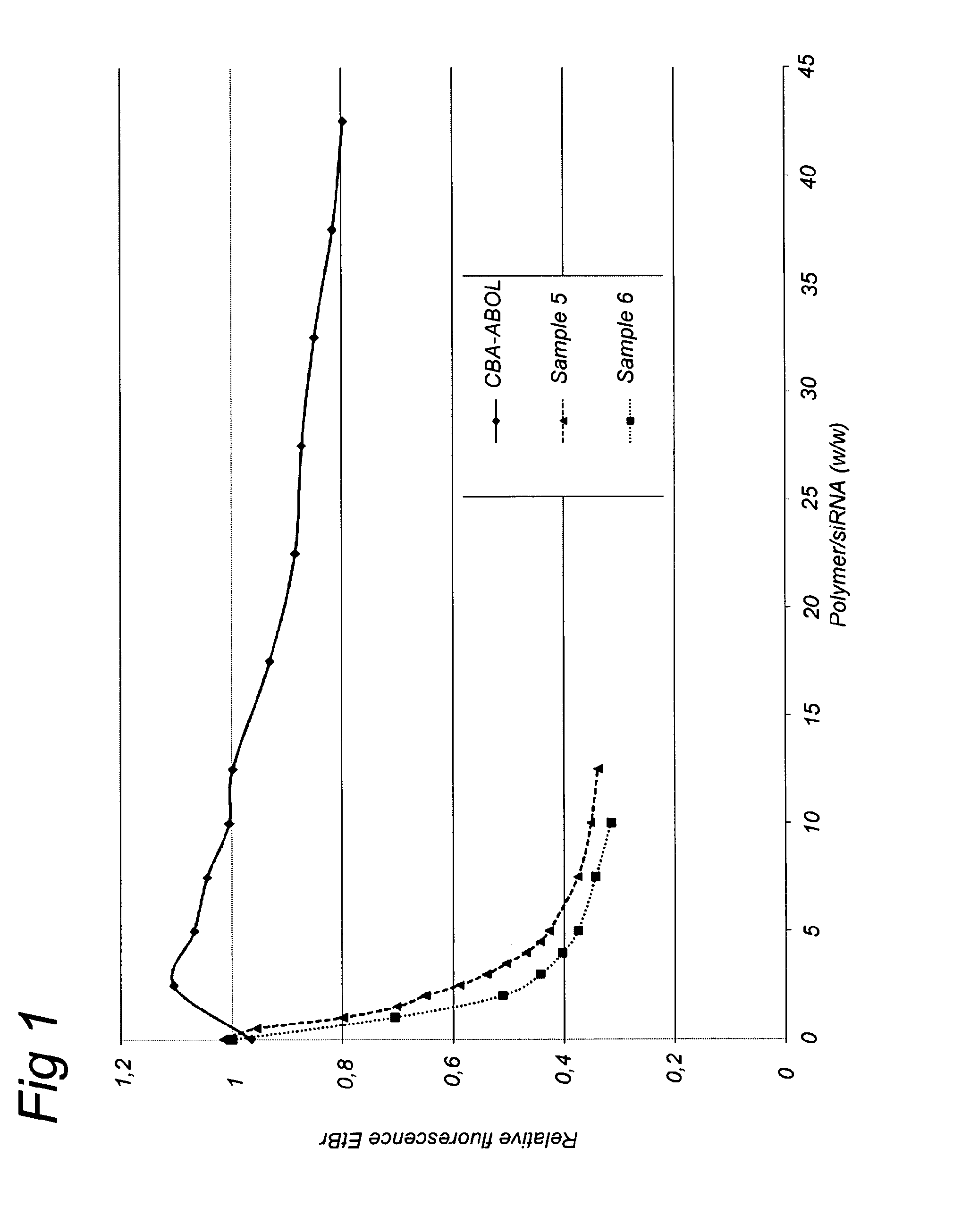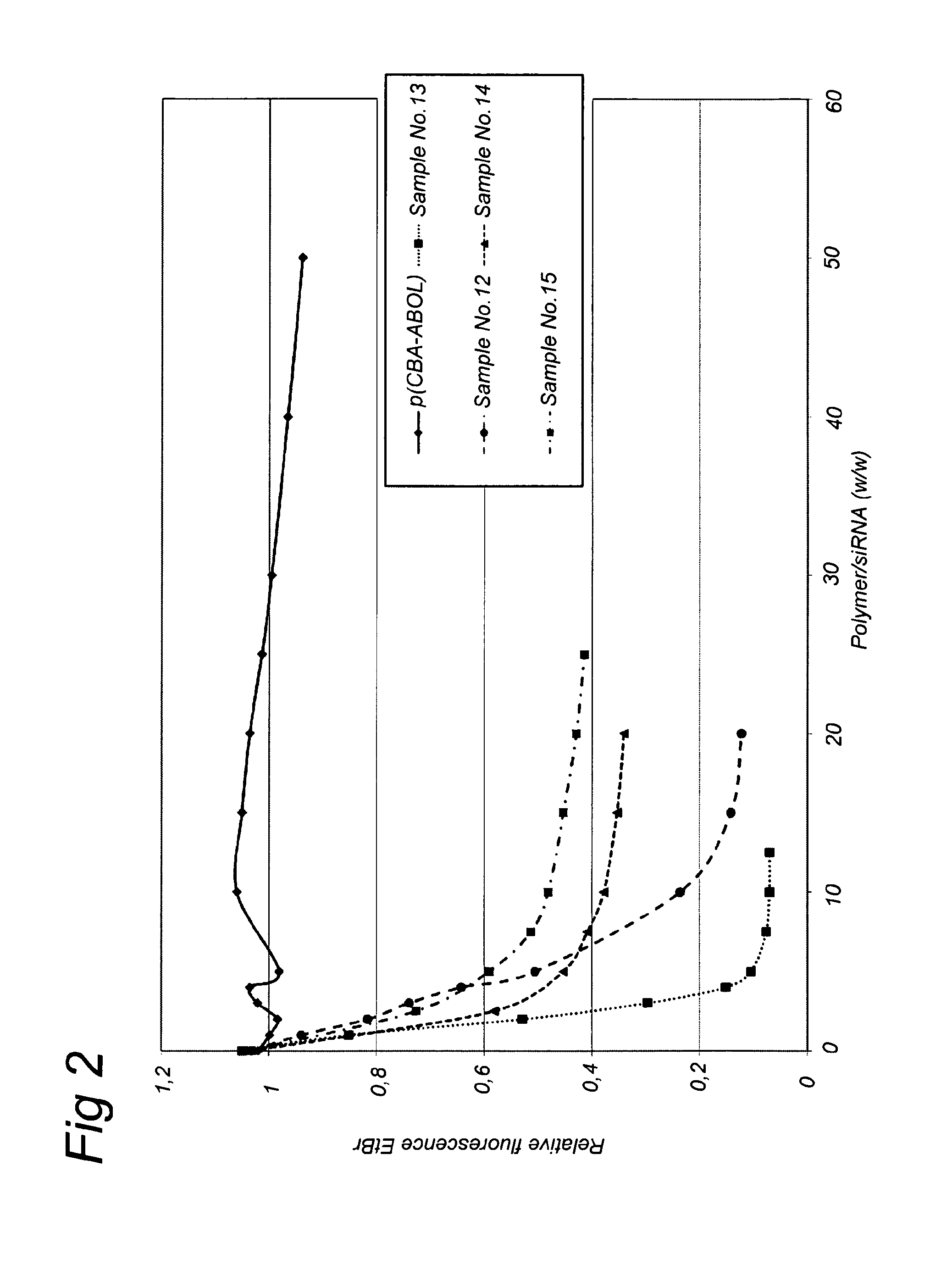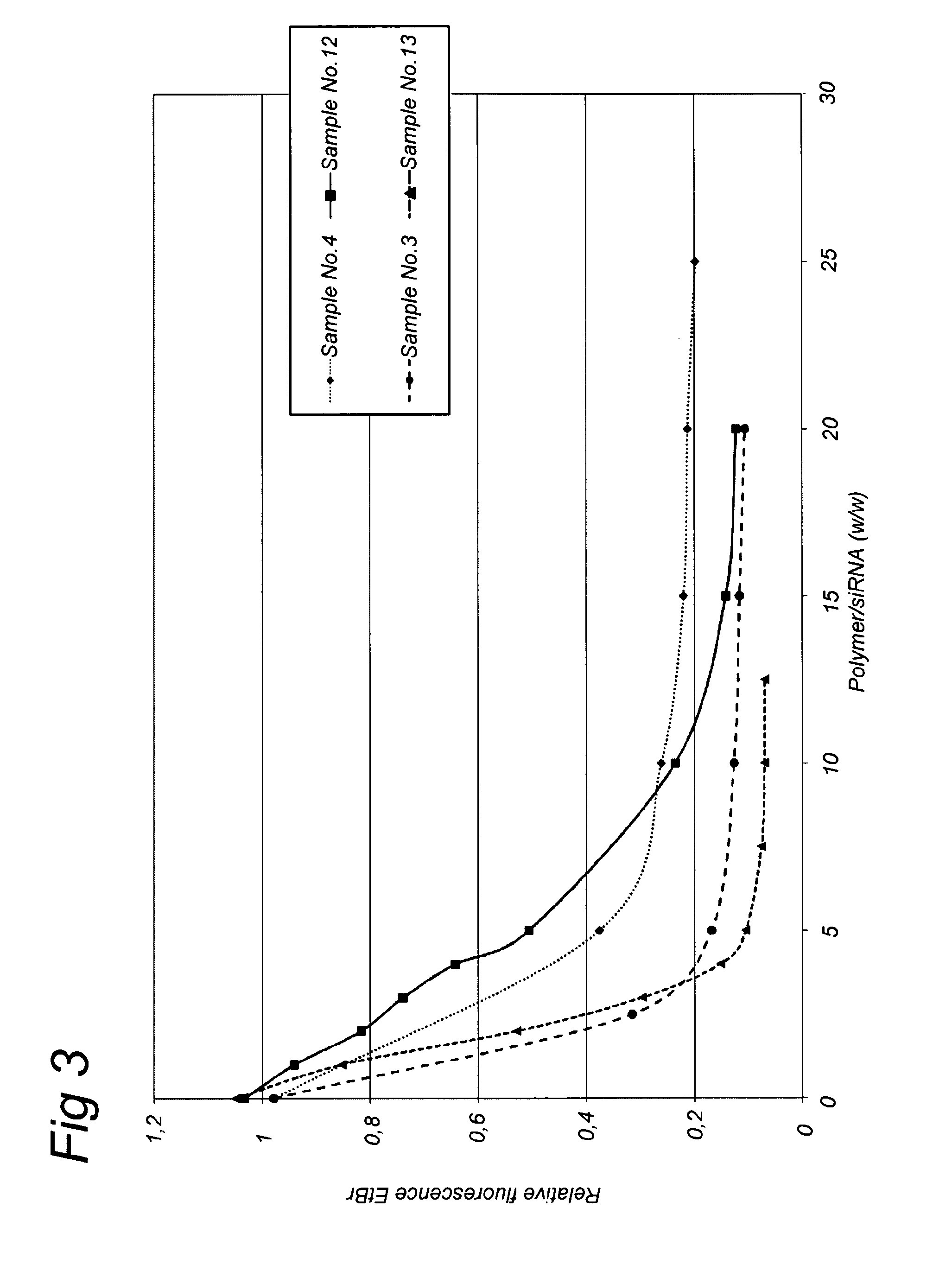Nanogels
a nanogel and hybrid coreshell technology, applied in the field of nanogels, can solve the problems of affecting the inability to pass through the cell membrane with great difficulty, and the delivery of sirna, etc., and achieves the effect of improving reducing the risk of toxicity, and reducing the stability of the therapeutically loaded nanogel
- Summary
- Abstract
- Description
- Claims
- Application Information
AI Technical Summary
Benefits of technology
Problems solved by technology
Method used
Image
Examples
example 1
Synthesis of Diacryloyl Macromer (A-(CBA-ABOL)n-A)
[0221]Approximately 0.48 g (0.0054 mol.) of 4-amino-1-butanol (ABOL) and 1.56 g (0.006 mol) of CBA (9 / 10 mol / mol ABOL / CBA ratio) was added to 3 ml of a solution of CaCl2 (0.4 M) in methanol-water 3 / 1 (v / v) and the reaction flask was sealed. The polymerization was carried out at 50° C. and the reaction was allowed to proceed for 30 h, yielding a viscous solution. The reaction was monitored by following with 1H-NMR, the integrated areas of two acryloyl peaks (δ 5.55 and 6.05) and two methylene peaks of the butanol side groups (1.58 ppm and 1.78 ppm). At the end of the polymerization the NMR integrations indicated that the macromer (A-(CBA-ABOL)n-A) contained about six ABOL units per acryloyl group, i.e. n=12.
example 2
Synthesis of Hyperbranched p(CBA-ABOL / PEI)
[0222]A volume of 2.12, 1.06, 0.53 or 0.26 ml of a solution of low molecular PEI 800 (100 mg / ml) was added to 1.34 g A-p(CBA-ABOL)12-A diacryloyl macromer in 3 ml methanol-water 3 / 1 (v / v) in order to achieve a desired molar ratio of acryloyl groups to PEI of 3 / 1, 6 / 1, 12 / 1 and 24 / 1, respectively. The mixture was diluted with a 0.4 M solution of CaCl2 in methanol-water 3 / 1 (v / v) to a final PEI concentration of 10 mM in order to prevent gelation during the reaction. The reaction was carried out at 50 C for 24 h. Subsequently, one half of the reaction mixture containing p(CBA-ABOL) / PEI end-capped with CBA acryloyl groups was separated for the synthesis of the nanogels. To the second half of the reaction mixture a 10-fold excess of ethylenediamine (EDA) was added in order to transform all terminal CBA acryolyl groups into amines. The resulting solution of ethylenediamine end-capped p(CBA-ABOL) / PEI was diluted with water to about 30 ml, acidified...
example 3
Synthesis of Hyperbranched p(CBA-ABOL) / PAMAM
[0223]A volume of 1.16, 0.87 or 0.58 ml of a solution of second generation PAMAM dendrimer (G2) (100 mg / ml) was added to 1.34 g A-p(CBA-ABOL)12-A diacryloyl macromer in 3 ml methanol-water 3 / 1 (v / v) in order to achieve a desired molar ratio of acryloyl groups to PAMAM molecules of 10 / 1, 15 / 1 and 20 / 1, respectively. The mixture was diluted by a 0.4 M solution of CaCl2 in methanol-water 3 / 1 (vol. / vol.) to a PAMAM final concentration of 10 mM in order to prevent gelation during reaction. The reaction was carried out at 50° C. for 24 h. Subsequently, one half of the reaction mixture containing p(CBA-ABOL) / PAMAM end-capped with CBA acryloyl groups was separated for the synthesis of nanogels. To the second half of the reaction mixture a 10-fold excess of ethylenediamine (EDA) was added in order to transform all terminal CBA acryolyl groups into amines. The resulting solution of ethylenediamine end-capped p(CBA-ABOL) / PAMAM was diluted with water ...
PUM
| Property | Measurement | Unit |
|---|---|---|
| Molecular weight | aaaaa | aaaaa |
Abstract
Description
Claims
Application Information
 Login to View More
Login to View More - R&D
- Intellectual Property
- Life Sciences
- Materials
- Tech Scout
- Unparalleled Data Quality
- Higher Quality Content
- 60% Fewer Hallucinations
Browse by: Latest US Patents, China's latest patents, Technical Efficacy Thesaurus, Application Domain, Technology Topic, Popular Technical Reports.
© 2025 PatSnap. All rights reserved.Legal|Privacy policy|Modern Slavery Act Transparency Statement|Sitemap|About US| Contact US: help@patsnap.com



